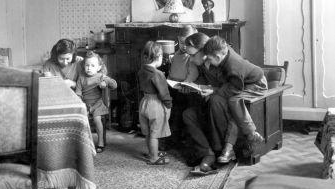In a belated honor of Children’s book day, here are some early literacy skills builder activities. The first steps of reading begin at home, so practice with your child and help to share with them a love of language and books.
Here are some early literacy skills builder activities:

1. Sing with your child
Singing with your child an teach them a lot about language. It can help them learn the rhythm, vocabulary, as well as, greater understanding on specific topics.
2. Talk with your child
By simply including your child in conversation, you are encouraging their understanding of language. This will in turn encourage their literacy skills. At an early age, describe things to your child and ask them their opinions (even before they can share it). By including them, you are showing that their voice is important and the more practice they get the better they will be with language.
It is important to note research shows that children respond better to less confrontational language, so instead of getting frustrated with the sounds your child makes try to show excitement over what they do know and encourage them to keep practicing.
3. Read together
Read with your child every day. Share with them a love for reading. Books can teach language as well as greater concepts. In our house we’ve used them not only to build on vocabulary but also to prepare for holidays and vacations by reading about similar experiences.
4. Writing Starts with Fine Motor Skills
Writing begins with scribbles and other fine motor developing skills. This means by simply encouraging your child to draw, pick up his own cheerios, and explore his world, you are encouraging their early writing skills.
5. Allow Time to Play
Imagination not only plays a huge role in reading but also in writing. This is something a child can start working on as a toddler. It will help them with reading comprehension and later on in writing their own stories.
Related articles to ‘Early Literacy Skills Builder’
Word Recognition: A Guide to Help Children Read
Curriculum Guides for Academic Interventions in English



